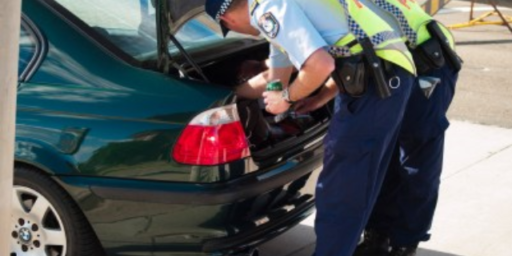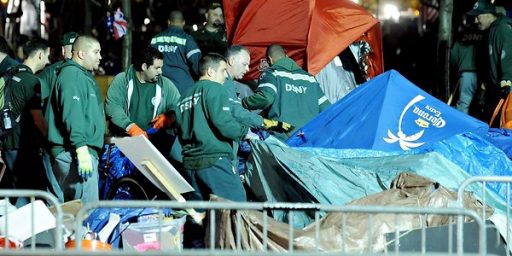Overdue Rental Car? Or Lucky to be Alive? PNW Floods
In case you missed the 7/24 news reports last week, the Pacific Northwest got slammed by the “Pineapple Express,” a series of relatively warm major storms that blasted Oregon, Washington, and BC*. These storms gave torrential downpours of rain, rather than the seasonally expected snow, causing massive flooding. But imagine you were just a tourist, trapped behind floodwaters. Are you liable for charges until the car is returned?
Claude Hite was seeking adventure when he left his Tampa, Fla., home for a camping trip with a friend in the Hoh Rain Forest. But becoming caught in heavy rains and having to leave his rental car behind was more than he anticipated.
Hite and Kenny Stadelman became trapped Nov. 6 when rains washed out part of the only road in the rain forest in Olympic National Park. The National Weather Service said 6 to 12 inches of rain fell throughout the park on Nov. 6. A typical rainy, winter day would bring a half to one inch of rain.
“It was tricky not to fall into the chasm when we thought we were past the point of no return,” Hite told the Seattle Post-Intelligencer. “And then we got to where there wasn’t any road to be flooded, and we stopped in the nick of time. … I could have died; it was that close.”
It was two days before the men were rescued by park service employees, along with two stranded park workers. However, Hite’s rented Chrysler PT Cruiser had to be left behind. It remains stuck as federal highway officials survey damage at the park. Officials said they don’t know when the road will be repaired.
Hite, an epidemiologist for the state of Florida, rented the car for 17 days for $425, plus fuel, from Thrifty Car Rental at Seattle-Tacoma International Airport.
It’s due back Sunday, when he flies home.
To repeat, 6 inches to a foot of rain that DAY.
“So according to our rental contract, we are responsible for paying the rent until the car is recovered,” he said.
It’s an additional $20 to $27 for each day a car is out. Charges generally accrue until a rental car is returned, although Thrifty risk manager Greg MacKenzie said he might lower the rate in Hite’s case.
MacKenzie said the company will retrieve the car after the park service builds a new road to access the Hoh Rain Forest visitor center, where the storm knocked out power. He said Bill Rohde, a district ranger at Olympic, told him it could be two or three weeks.
“It’s raining like crazy. Winds are howling,” said Rohde, who 11 years ago had a car stranded in the park for six months after a fall storm.
Hmmm, until a new road is built. Ouch.
Meanwhile, the next National Park to the west is basically destroyed for tourist visitations for a few years. Mt Rainier will endure, unless the mountain decides otherwise (possibly the case on a dormant volcano) but all the access roads have been destroyed. As I write this the National Park Service website can’t handle the load, but the damage can be seen there when it recovers
For those not familiar with the area, this means that the 2 major areas of the park are now about 200 miles apart, rather than 30 miles — assuming that the major areas can be accessed next season (Sunrise and Paradise). It will likely be years before the roads can be repaired, unless major emergency Federal funding happens (this is all Federal land, so it is Federal funding), in which case it will be a couple of years. In one spot a gully 60 ft wide and 80 ft deep has crossed a road.
I’d pass on a trip to Mt Rainier in the next few years unless you live nearby (I do). However, storms like this happen about every ten years in the PNW, and this time Rainier took the brunt.
*BC=British Columbia, part of Canada, the USA’s major trading partner, and part of the PacNorWest economy.






Hmmm…
I wonder if he took the full coverage when he rented it? Might be worth the trouble to get someone to go up and set fire to it.
“Oops, sorry, I have your $250 deductible right here…”
Cirby,
I had a similar thought. Assuming the full coverage and ignoring the danger to life and limb, the difference between his stopping on time and going into the hole could be a couple hundred dollars.
I happened to be out of town on 9/11 with a rental car and just started driving home. I went from “I’ll pay whatever they assess as a ‘one way’ fee” to hearing on the radio that the car company was rescinding all ‘one way’ fees. The company realized that their cars were likely to get jumbled, but that they could lose a lot of good will charging their customers during a national crisis (especially if competitors waived the charge and they didn’t).
This is a case of an individual crisis. The rental car company is without its asset, but I suspect demand may be a trifle low for a bit. Legally they have a great legal position. What I would recommend they do from a marketing standpoint is agree that this is a special circumstance and offer a special deal with the customer. Customer pays the standard $50 “special pick up” fee for the rental company to go and get the car back. Further, after Sunday, the customer only pays the extended rental fee if the rental company rents out all the cars of that class on that day (indicating demand high enough that they could probably have rented out the car). If they don’t rent all the cars in that class, then it would have sat on their lot anyway so don’t charge the customer. Its more than they legal need to do and would seem to me to be a fair way to split the risk between the rental company and the customer.
Does the Doctrine of Impossibility apply here?